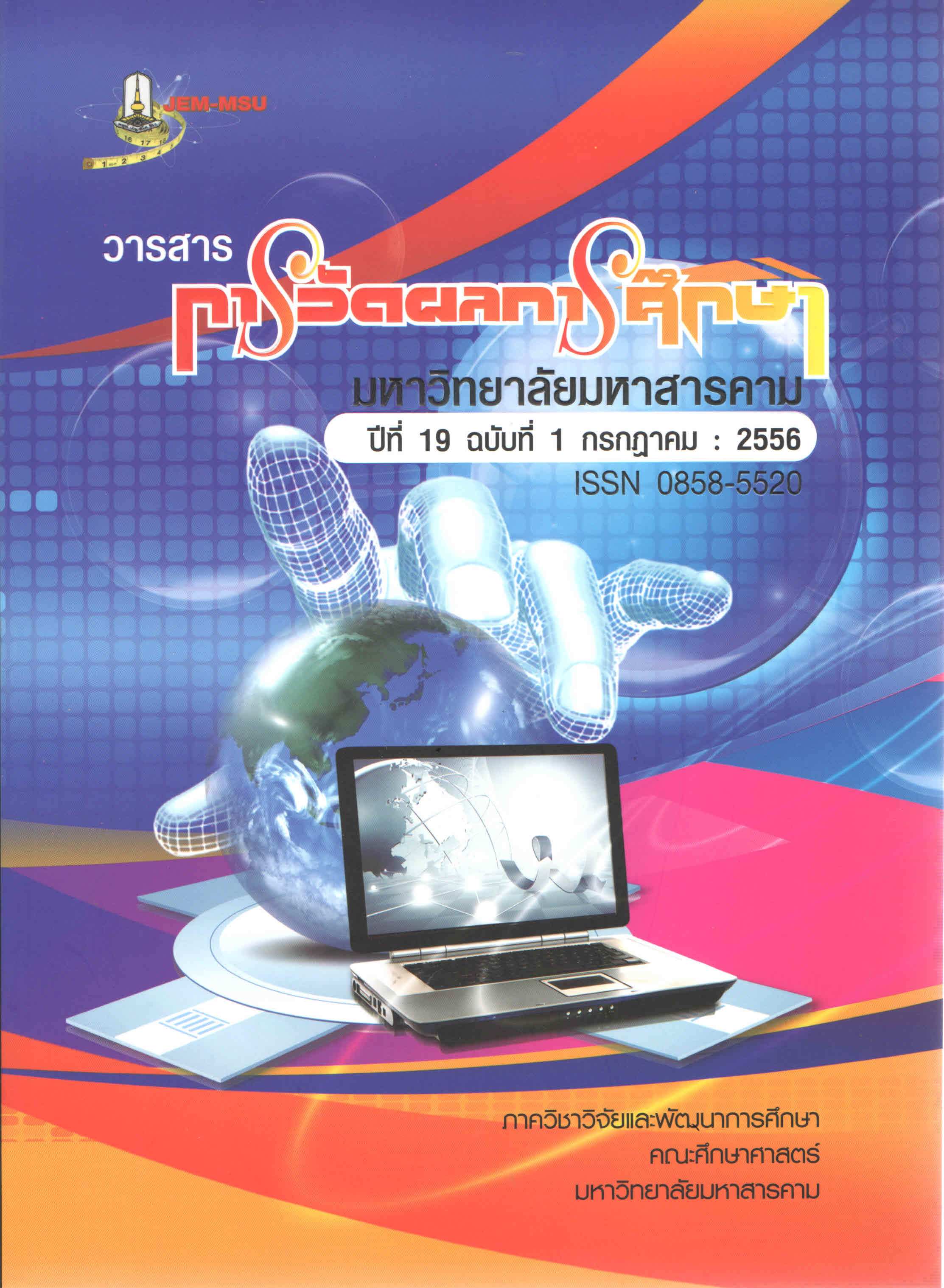THE DEVELOPMENT OF INDICATORS OF STUDENT LIFESKILLS IN SECONDARY SCHOOL UNDER THE ADMINISTRATIVE ORGANIZATION UDONTHANI PROVINCE.
Main Article Content
Abstract
The purposes of this research were to develop the life skill indicator of the lower
secondary school students, under The Administrative Organization Udonthani Province , to analyze
the effective factors of the student’s life skill. In this study, the sample group included 956 lower
secondary school students, under The Administrative Organization Udonthani Province. They were
divided into 3 groups consisting of 1) the sample for focus group 2) the sample for the exploratory
factor analysis and 3) the sample for the confirmatory factor analysis. The instruments used in the
study were semi-structured interviews with the students life skills including communication and
human relations, decision-making and problem solving and the goal of life. The Interviewing was
done with teachers who expertise in student assistant system. To confirm from the focus groups
with students and the Life Skill Indicator Questionnaire with a 5-level rating scale. The
questionnaires had 1 forms 45-item. Quality indicators of the content are accurate ranging 0.60 to
1.00 These instruments had discrimination power ranging from 0.29 to 0.49 and a reliability of 0.95
Data analysis was completed with basic statistical approaches, while EFA and CFA were conducted
by using the statistical software. The results of the study were as follows :
1. The exploratory factors consisted of 7 dimensions and 45 indicators, ranked by
the total factor loading, from low to high score. In details, 7 dimensions included Stress Management,
Self-control, Social-responsibility, Critical Consideration, Collaboration and Teamwork, Problem
solving, and Communication. These factors were applicable to explain the definition of life skill for
58.74%.
2. The second confirmatory factor had a factor loading of the student’s life skill
indicator regarding 7 dimensions and 45 indicators. This factor loading was ranked from low to high
score. Namely, Social Need, Stress Management, Critical Consideration, Self-Control,
Communication, Collaboration and Teamwork, and Problems Solving individually had a total factor
loading as follows: 0.942, 0.884, 0.855, 0.848, 0.841, 0.840 and 0.777 respectively. Meanwhile, R2
was 0.845, 0.782, 0.731, 0.718, 0.643, 0.705, and 0.604. Besides, each factor shares the variance
with the student’s life skill indicator. In particular, Social Need was the most important factor,
whilst Problem Solving was the least one. Goodness of Fit Index (GFI) between the model and
empirical data indicated that Chi-Square was 2 = 1246.291, df = 915, 2/df = 1.362, CFI= 0.965,
TLI = 0.962, RMSEA = 0.025, SRMR = 0.038. This signified the construct validity of the model. In
sum, there are a number of indicators and variables meaningfully involved with the life skill, in
which the stakeholders need to develop these indicators to empower the life skill of the lower
secondary school students, under The Administrative Organization Udonthani Province.
Article Details
The content and information contained in the published article in the Journal of Educational Measurement Mahasarakham University represent the opinions and responsibilities of the authors directly. The editorial board of the journal is not necessarily in agreement with or responsible for any of the content.
The articles, data, content, images, etc. that have been published in the Journal of Educational Measurement Mahasarakham University are copyrighted by the journal. If any individual or organization wishes to reproduce or perform any actions involving the entirety or any part of the content, they must obtain written permission from the Journal of Educational Measurement Mahasarakham University.

